|
Violent storms caused more damage than any other type of extreme weather in 2019, with poorest nations bearing the brunt, according to a study published Monday by environmental organization Germanwatch. Made stronger by climate change, they wreaked havoc across the world. "On the one hand, there was Cyclone Idai on the southeast coast of Africa, which caused damage in Mozambique, Zimbabwe, Malawi; and, on the other hand, a hurricane in the Caribbean that hit the Bahamas," said David Eckstein, a policy advisor at Germanwatch and co-author of the report, which has been published each year since 2006. More than 1,000 people lost their lives Idai in Mozambique, Zimbabwe and Malawi in March 2019, causing "catastrophic damage and a humanitarian crisis," the authors wrote. The global index is based on data from the German reinsurance company Munich Re. It compares the number of deaths and property damage caused by extreme weather to the number of inhabitants and the gross domestic product of the country in which it strikes. 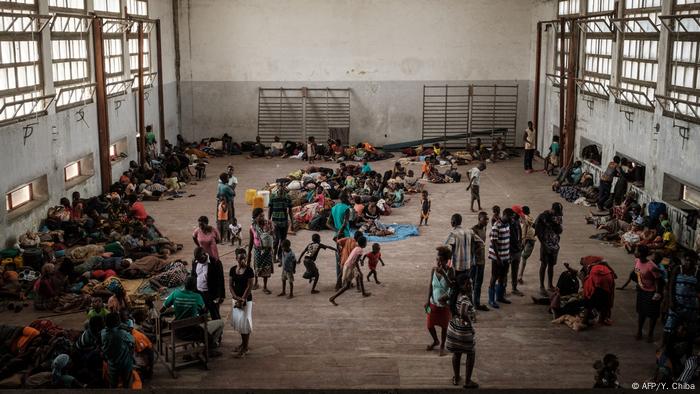 Cyclone Idai was more devastating than similar-strength storms that year because of a lack of early-warning systems 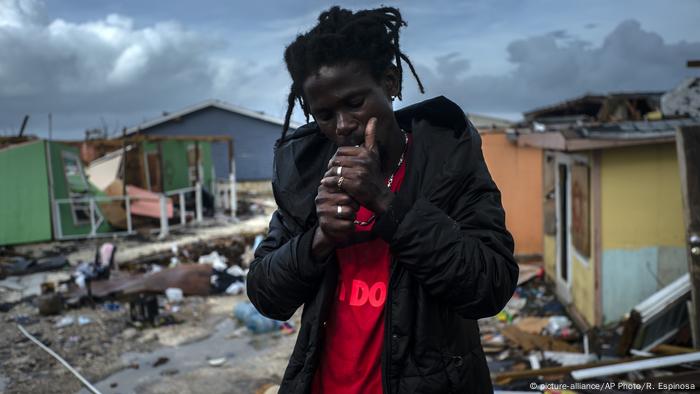 Hurricane Dorian devastated the Bahamas in 2019 and unleashed flooding that reached up to 8 meters in some areas Major damage from storms and heavy rainfall Japan was also hit hard by Typhoon Hagibis, which killed 290 people. Prolonged rainfall caused more than 2,200 deaths in India. Several hundred people also died in Afghanistan, South Sudan and Niger as heavy rains triggered landslides and destroyed homes. In Bolivia, heavy rains led to flooding; 34 people died and 23,000 families were left homeless. Fires also destroyed 2 million hectares of forest, grassland and protected areas. While storms have always claimed lives and damaged homes, they are "increasing in intensity, and that can be attributed to climate change," said Eckstein. "We did interviews with people from Mozambique who said that there have always been cyclones on the southeast coast of Africa, but never with the ferocity as in 2019 with Idai."
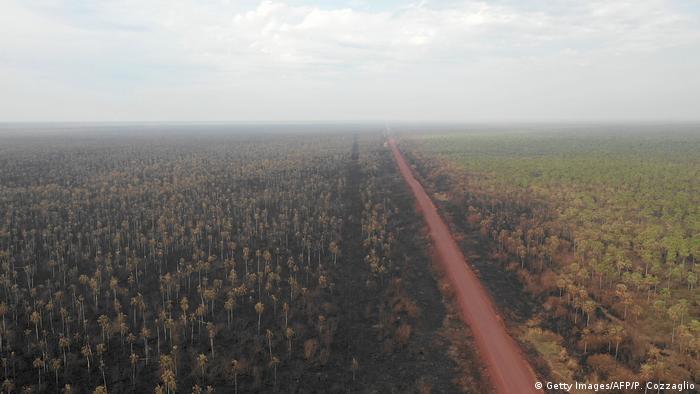 Bolivia's Pantanal was ravaged by wildfires in 2019 and again in 2020 More severe cyclones with every tenth of a degree In 2019, all 10 of the countries most severely affected by extreme weather suffered from heavy floods, according to the report. Last year, large amounts of rain hit eight of the 10 most-affected countries, while two others, Germany and Canada, were exposed to extreme heat. "The rain actually causes the most damage in a cyclone due to the extreme amounts of water," said Eckstein. "Climate change plays a special role in this on several levels." One reason for the increase in rain is that the sea and the air are getting warmer as the planet heats. Warm air holds more moisture, which means more rain. Climate scientists say storms are not becoming more common, but, rather, stronger. The report projects that the number of tropical cyclones that are classed as severe will increase with every tenth of a degree rise in average global temperature.
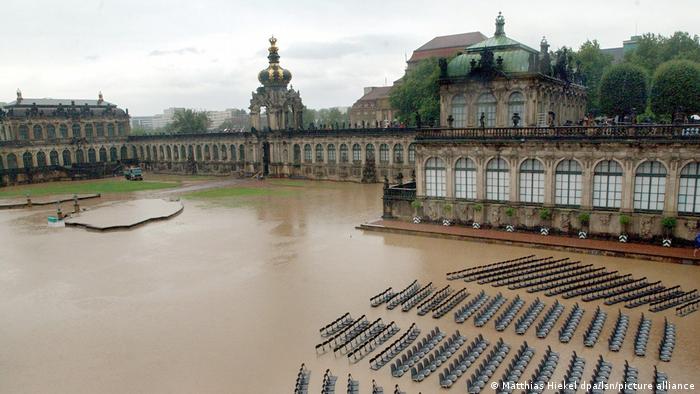 World heritage under threat from global warming Dresden
World heritage under threat from global warming Dresden In 2002, a so-called 100-year flood put large parts of Dresden under water — and threatened numerous cultural treasures. The baroque Zwinger palace was also flooded. The city founded a task force to be prepared for future extreme weather events. Today there are global efforts underway to use climate modelling to better plan for the protection of cultural monuments in the future. 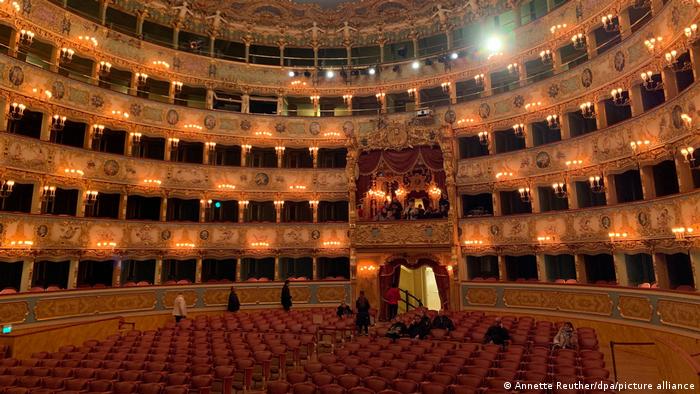 World heritage under threat from global warming Venice
World heritage under threat from global warming Venice The city, built on islands, struggles against the influences of water anyway, but climate change means that natural disasters such as the 2019 floods will become more frequent. The recital hall of the opera (above) was under water, as were palaces and churches. Researchers are not only examining such extreme weather events, but also the long-term effects of climate change. 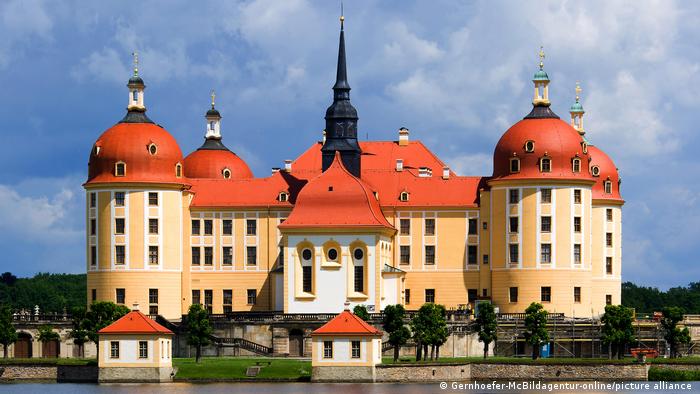 World heritage under threat from global warming Moritzburg Schloss
World heritage under threat from global warming Moritzburg Schloss In the past, high humidity was a particular problem for cultural assets. Now, it is the increasingly dry air. This is also the case in the baroque Moritzburg castle in Saxony, where there is a large collection of baroque leather wallpapers. Their paintings have already been extensively refurbished, as they showed damage such as shrinkage cracks. These can be traced to periods of extreme heat. 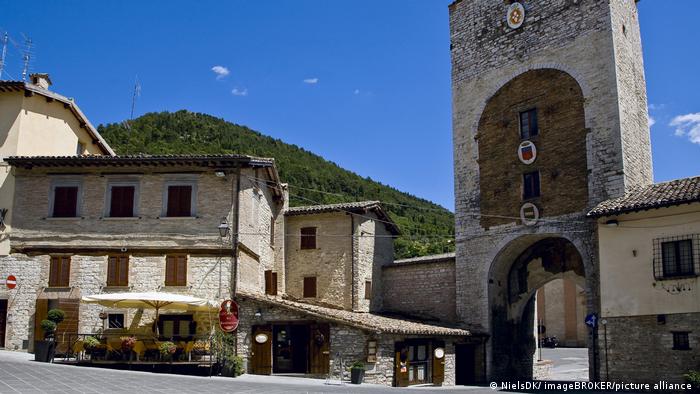 World heritage under threat from global warming Gubbio
World heritage under threat from global warming Gubbio A historical city wall encircles the city of Gubbio in Italy's central Umbria region. Like the palazzo and its archaeological excavations, the wall is threatened by shifting foundations and moisture. Part of the city wall collapsed after rain loosened the mortar and stones fell out. A European research team is using electromagnetic scans to assess the structural health of the ancient monuments. 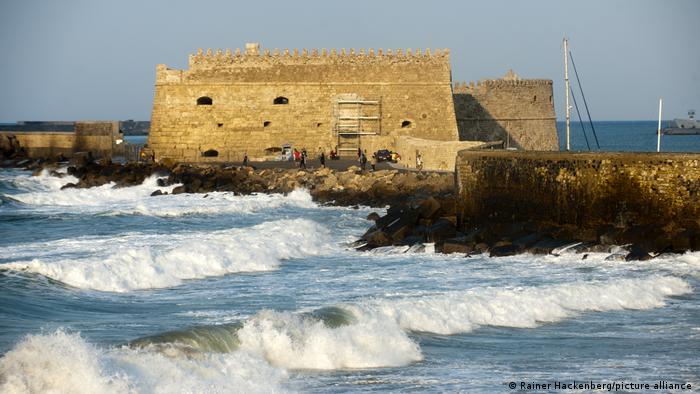 World heritage under threat from global warming Koules fortress, Crete
World heritage under threat from global warming Koules fortress, Crete The fortress of Koules stands guard at the entrance to the Cretan capital's harbor, as it has since the early 16th century. Although it has withstood a lot over the centuries, changing wave patterns are now eroding the building. Climate change has caused a change in wind patterns, altering the wave direction. The salt water penetrates and erodes the walls, damaging the monument. 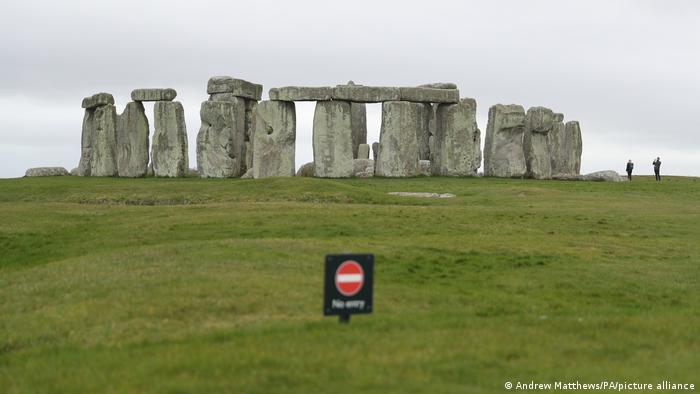 World heritage under threat from global warming Stonehenge
World heritage under threat from global warming Stonehenge The UNESCO World Heritage Site has existed for more than 4,000 years. Now moles churn the ground in such a way that it threatens to collapse in the long term. Behind this is a climate-related cycle: Mild winters increase the mole population and earthworms, a preferred food for moles, multiply due to warmer and more humid soil conditions. Heavy rains also saturate the soil. 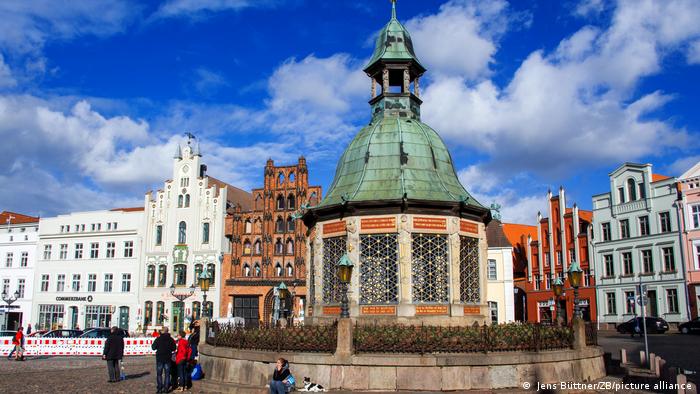 World heritage under threat from global warming Threatened old city centers
World heritage under threat from global warming Threatened old city centers Wismar's old town, with its historic gabled buildings and waterworks (see photo) is as culturally important as the old towns of Lübeck and Stralsund. In the long term, all three cities are threatened by rising sea levels. If global warming continues unchecked, future archaeologists will have to search for our heritage underwater. The city centers of Naples, Bruges and Istanbul are also at risk. 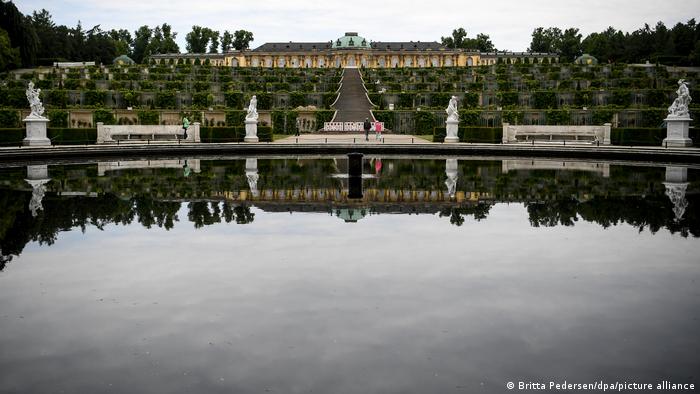 World heritage under threat from global warming Historic parks and gardens
World heritage under threat from global warming Historic parks and gardens Climate change affects more than just buildings and the treasures housed within. Historic parks and gardens, such as the one surrounding the Sanssouci Palace in Potsdam near Berlin, must also be prepared for new climatic conditions. Several projects are testing models to improve the resistance of plants, as well as adjusting the planted species to better withstand new climatic conditions. Author: Torsten Landsberg
Poor hit hardest Since 2000, more than 475,000 people have died in more than 11,000 extreme weather events, according to the report. Eight of the 10 countries hardest-hit between 2000 and 2019 are poorer nations. "They are the hardest-hit because they are more vulnerable to the damaging effects of a hazard and have a lower coping capacity," said report co-author Vera Kuenzel. These countries have less money to build back than industrial countries. "Countries like Haiti, the Philippines and Pakistan are repeatedly affected by extreme weather events and do not have time to fully recover before the next event occurs," says Kuenzel. "Strengthening their resilience must therefore not only address adaptation, but also provide the necessary support to deal with loss and damage."
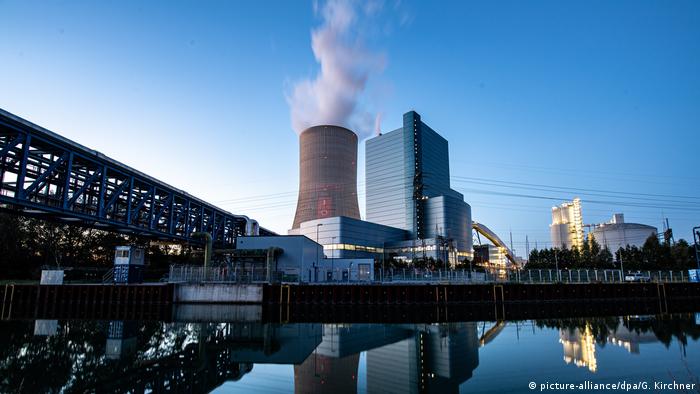 Historic polluter Germany built another power plant last year to burn coal Polluters do not yet pay for damage Most developing countries have contributed little to the rise of CO2 in the atmosphere and bear less responsibility for the damages of global warming than historic emitters like the US and Germany. "Now, however, they urgently need financial and technical support to adapt to the consequences as far as possible," said Eckstein. The rise in CO2 in the atmosphere has mostly been caused by industrialized countries burning coal, oil and gas. But so far, the energy companies that profited from this have not paid anything for the damage that has followed. Leaders of industrialized countries have promised poorer countries $100 billion (€82.3 billion) in climate finance each year from 2020 to cope with the crises. But "recent studies show that the $100 billion per year pledged by industrialized nations is not being met and only a small part of it has been allocated to climate adaptation," said Eckstein.
Extreme weather in Vietnam Hoping for more responsibility That might soon change. Former US President Donald Trump, who stopped all US payments to the International Climate Fund, took the country out of the Paris Agreement on climate change. But within hours of taking office last week, President Biden signed an executive order for the US to rejoin. "We hope that there will be a positive change in position and that the US will significantly revise the climate protection goals formulated under Obama upward," said Eckstein. "We also hope that a dynamic is sparked between the US, China and the EU." The pandemic shows how important financial aid is for many countries, said Laura Schaefer of Germanwatch. Risks in different areas, such as health and the economy, are closely linked. In the future, "it will be important to improve the crisis resilience of these countries — especially climate resilience." This article was adapted from German.
|